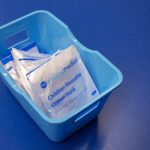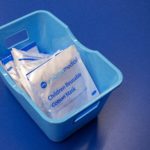Teachers union skeptical as Nova Scotia schools poised to return to in-class learning

HALIFAX — As 400 public schools in Nova Scotia prepare to resume in-person classes on Monday, the president of the province's teachers union says he has "severe doubts" as to whether they can stay open until the end of the week.
In an interview Sunday, Paul Wozney said he believes the government has been "overselling" its plan to help schools remain open as the Omicron variant of COVID-19 continues to sweep through the province.
"I think people forget, but before the holidays we couldn't keep the doors open to in-person learning, we didn't have enough staff," said Wozney. ""The pressure that Omicron presents hasn't lessened, it's gotten worse."
The province reported 696 new confirmed cases of COVID-19 on Sunday and 627 cases on Saturday.
"I have severe doubts about whether or not we're going to be able to sustain in-person learning until the end of this week," Wozney said.
Nova Scotia schools have been closed to students since in-person classes ended on Dec. 18 and have been learning remotely since instruction resumed on Jan. 10.
Wozney said the province should exercise caution and continue with remote learning until case numbers are more manageable as has been done in New Brunswick, Prince Edward Island and Newfoundland and Labrador.
Students are not scheduled to return to in-class learning in New Brunswick until Jan. 31, while Newfoundland and Labrador and P.E.I. are holding off on a return until at least Jan. 24.
Meanwhile, Nova Scotia Premier Tim Houston admitted last week that school closures due to outbreaks and staff shortages are a possibility.
But Education Minister Becky Druhan told reporters following a cabinet meeting Thursday that plans are in place to respond to whatever operational challenges arise.
"We are putting plans in place provincewide and additionally at a school level to make sure we are prepared as well as we possibly can," Druhan said. "We will do our best to work through (challenges) and to ensure that we have kids in school ... as much as we possibly can."
Druhan said that includes assigning administrative staff from school districts to the classroom in the event of teacher shortages due to illness or the need to self-isolate.
Druhan said other steps taken include the installation of portable ventilation units in classrooms. Three-ply cloth masks will also be available to teachers and students, she added.
Despite the contingency plans Wozney still questions whether there will be enough staff available to teach should in-school virus outbreaks occur.
He said part of the problem is an ever shrinking pool of available substitute teachers, an issue that was evident before the pandemic began.
As an example, Wozney cited the Halifax area which he said went from a list of as many as 2,000 active substitutes to just below 1,000 after the pandemic began. He said the shortages are worse in rural areas of the province.
"We do not have the people to sustain in-person learning for any prolonged period of time," he said. "We've made that abundantly clear to the (education) department."
Wozney added that he doesn't know whether there is a plan to cover off custodial or administrative staff who may be absent.
"It strains all reason that we are going to put our youngest, least vaccinated Nova Scotians in this situation and effectively hope for the best," he said.
This report by The Canadian Press was first published Jan. 16, 2022.
Keith Doucette, The Canadian Press





